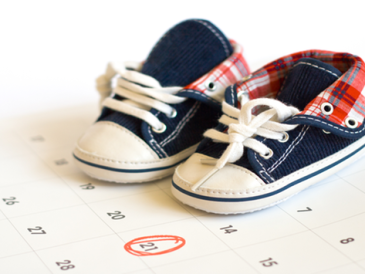When exposed to an allergen, a person might experience an overreaction from their immune system leading to an anaphylactic reaction. This severe and life-threatening reaction can occur and escalate quickly, leading to serious medical complications. While it can happen at any age, anaphylaxis can pose a serious risk to children, as they are generally more vulnerable to the side effects of the condition.
As a parent or caregiver, it is essential to understand the causes, signs, and symptoms of anaphylaxis, should it ever occur for a child in your care. This article aims to provide an overview of how to handle anaphylaxis in children, including practical tips and recommendations for action when faced with this condition.
Understanding the Causes
Several triggers can cause anaphylaxis in children, including:
- Foods, such as peanuts, tree nuts, fish, shellfish, milk, and eggs.
- Insect stings or bites, such as ants, wasps, bees, and mosquitoes.
- Latex or medications, which can cause an allergic reaction in some children.
- Exercise, emotional stress, or cold temperatures in rare cases, although this is more commonly seen in adults.
Anaphylaxis can also occur when there is no apparent cause, which is known as idiopathic anaphylaxis. With these causes in mind, it is essential to be watchful of any potential allergens if a child in your care has certain allergies or sensitivities that could lead to an anaphylactic reaction.
Recognizing Symptoms of Anaphylaxis
The signs and symptoms of anaphylaxis can vary from child to child and be mild to severe. The symptoms can develop quickly, which means you need to be on the lookout and be ready to act if you suspect a child is showing an anaphylactic reaction. Here are some common symptoms of anaphylaxis:
- Skin reactions, such as hives, itchiness, and swelling of the face, lips, or tongue.
- Difficulty or noisy breathing, coughing or wheezing, and a tight chest.
- A sudden feeling of weakness or dizziness, or even collapsing.
- Abdominal pain, nausea, or vomiting.
- A sudden feeling of anxiety, confusion, or a sense of doom.
Anaphylaxis is a severe allergic reaction that requires urgent medical attention. The symptoms can escalate rapidly to life-threatening levels, so it is crucial to act quickly to prevent complications from occurring.
The Actions to Take
If you suspect a child is experiencing an anaphylactic reaction, it is essential to take immediate action to prevent the situation from escalating. Here are some recommended steps and actions to take:
-
Administer Epinephrine: If the child has an epinephrine auto-injector (such as EpiPen), use it immediately. Follow the instructions provided in the device, which usually involves injecting it into the thigh muscle and holding it for ten seconds.
-
Call for Emergency Assistance: Even if you have already administered the epinephrine, call for emergency assistance immediately. Explain that you believe the child is experiencing anaphylactic shock and provide your or the child’s location.
-
Monitor Breathing and Circulation: Keep an eye on the child to ensure their breathing and circulation continue. In some cases, the child might need CPR if they lose consciousness or experience cardiac arrest.
-
Manage Symptoms Promptly: Provide antihistamines or inhalers if necessary, but make sure they do not delay emergency response. Remember that prompt medical attention is crucial in managing severe allergic reactions like anaphylaxis.
Conclusion
Anaphylaxis is a severe and life-threatening reaction that requires prompt action from parents, caregivers, and healthcare professionals. As a caregiver, understanding the causes, signs, and symptoms of anaphylaxis, and knowing what actions to take, is essential in handling this condition properly and preventing serious complications from occurring. Remember to be vigilant, manage symptoms promptly, and act quickly if you suspect an anaphylactic reaction, to ensure the best possible outcomes for a child in your care.





